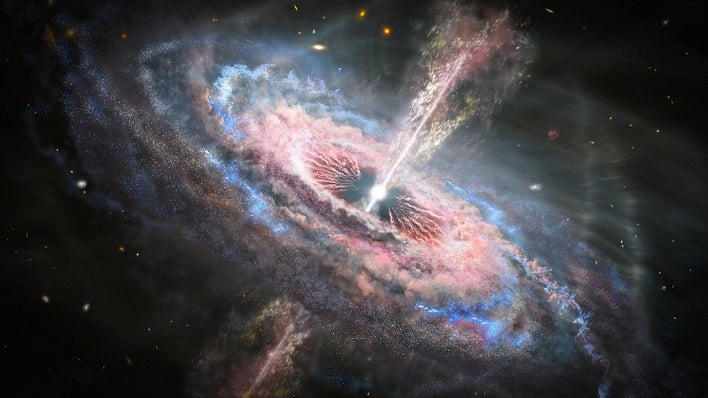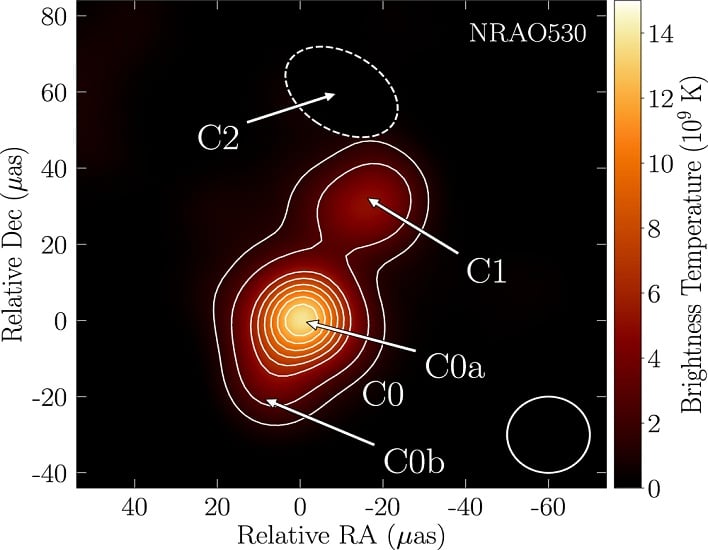Event Horizon Telescope Spots Black Holes Spewing Bright And Powerful Cosmic Monsters

A global team of scientists using the Event Horizon Telescope (EHT) has gotten a glimpse into the heart of a distant quasar. Quasars are extremely luminous cosmic monsters located at the center of distant galaxies, powered by supermassive black holes. The light captured in these images is said to have traveled toward Earth for 7.5 billion years.
The group of scientists and astronomers are attempting to understand the physics of quasars and answering questions such as how exactly jets are powered and created, and what role magnetic fields play in their formation. The team aims to use the extraordinarily high, unprecedented angular resolution images of structures in the central region of quasar NRAO 530 to begin answering some of these questions.
EHT is an international collaboration that was formed to further the study of the long-term progress on improving the capability of Very Long Baseline Interferometry (VLBI) at short wavelengths. It links radio dishes around the globe in order to create an Earth-sized interferometer, which has been used to measure the size of the emission regions of supermassive black holes.

Images of NRAO 530 from the 2017 April EHT observations produced using DIFMAP
By utilizing different imaging algorithms, the team is able to gain a better understanding of the structure of an object on fine scales that are opaque at longer wavelengths. This includes new methods used specifically for high-frequency VLBI imaging.

Fiducial EHT total intensity image of NRAO 530; the color scale corresponds to the brightness temperature
Dr. Maciek Wielgus, who co-led the recent study, explained that the light seen traveled 7.5 billion years through the expanding Universe. He added that due to the power of the EHT "we see the details of the source structure on a scale as small as a single light-year."
The EHT collaboration hopes that further studies of the quasar will help them to understand how the innermost jet features and their connection to the production of high-energy photons change over time.

